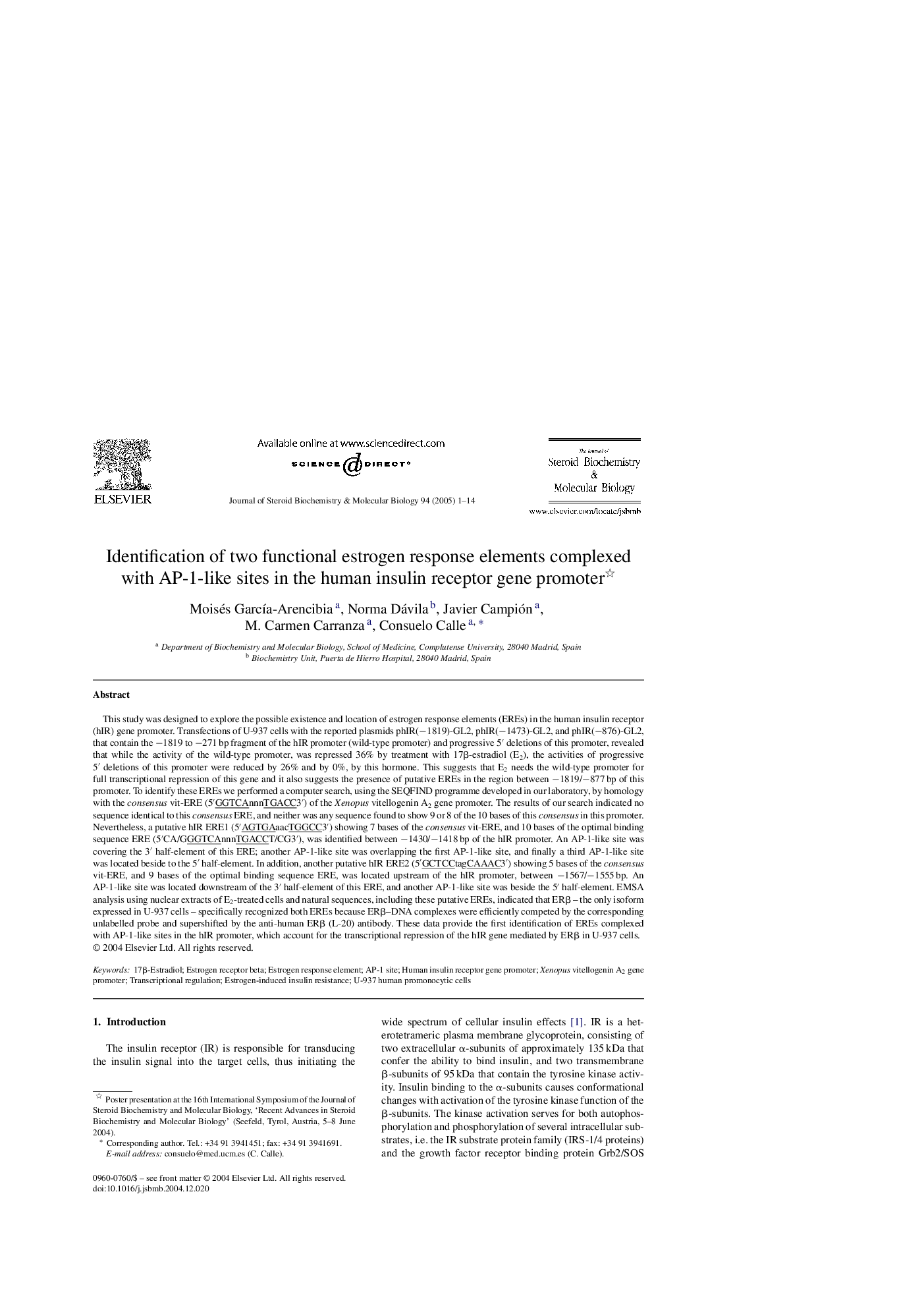| Article ID | Journal | Published Year | Pages | File Type |
|---|---|---|---|---|
| 9892173 | The Journal of Steroid Biochemistry and Molecular Biology | 2005 | 14 Pages |
Abstract
This study was designed to explore the possible existence and location of estrogen response elements (EREs) in the human insulin receptor (hIR) gene promoter. Transfections of U-937 cells with the reported plasmids phIR(â1819)-GL2, phIR(â1473)-GL2, and phIR(â876)-GL2, that contain the â1819 to â271 bp fragment of the hIR promoter (wild-type promoter) and progressive 5â² deletions of this promoter, revealed that while the activity of the wild-type promoter, was repressed 36% by treatment with 17β-estradiol (E2), the activities of progressive 5â² deletions of this promoter were reduced by 26% and by 0%, by this hormone. This suggests that E2 needs the wild-type promoter for full transcriptional repression of this gene and it also suggests the presence of putative EREs in the region between â1819/â877 bp of this promoter. To identify these EREs we performed a computer search, using the SEQFIND programme developed in our laboratory, by homology with the consensus vit-ERE (5â²GGTCAnnnTGACC3â²) of the Xenopus vitellogenin A2 gene promoter. The results of our search indicated no sequence identical to this consensus ERE, and neither was any sequence found to show 9 or 8 of the 10 bases of this consensus in this promoter. Nevertheless, a putative hIR ERE1 (5â²AGTGAaacTGGCC3â²) showing 7 bases of the consensus vit-ERE, and 10 bases of the optimal binding sequence ERE (5â²CA/GGGTCAnnnTGACCT/CG3â²), was identified between â1430/â1418 bp of the hIR promoter. An AP-1-like site was covering the 3â² half-element of this ERE; another AP-1-like site was overlapping the first AP-1-like site, and finally a third AP-1-like site was located beside to the 5â² half-element. In addition, another putative hIR ERE2 (5â²GCTCCtagCAAAC3â²) showing 5 bases of the consensus vit-ERE, and 9 bases of the optimal binding sequence ERE, was located upstream of the hIR promoter, between â1567/â1555 bp. An AP-1-like site was located downstream of the 3â² half-element of this ERE, and another AP-1-like site was beside the 5â² half-element. EMSA analysis using nuclear extracts of E2-treated cells and natural sequences, including these putative EREs, indicated that ERβ - the only isoform expressed in U-937 cells - specifically recognized both EREs because ERβ-DNA complexes were efficiently competed by the corresponding unlabelled probe and supershifted by the anti-human ERβ (L-20) antibody. These data provide the first identification of EREs complexed with AP-1-like sites in the hIR promoter, which account for the transcriptional repression of the hIR gene mediated by ERβ in U-937 cells.
Related Topics
Life Sciences
Biochemistry, Genetics and Molecular Biology
Biochemistry
Authors
Moisés GarcÃa-Arencibia, Norma Dávila, Javier Campión, M. Carmen Carranza, Consuelo Calle,
